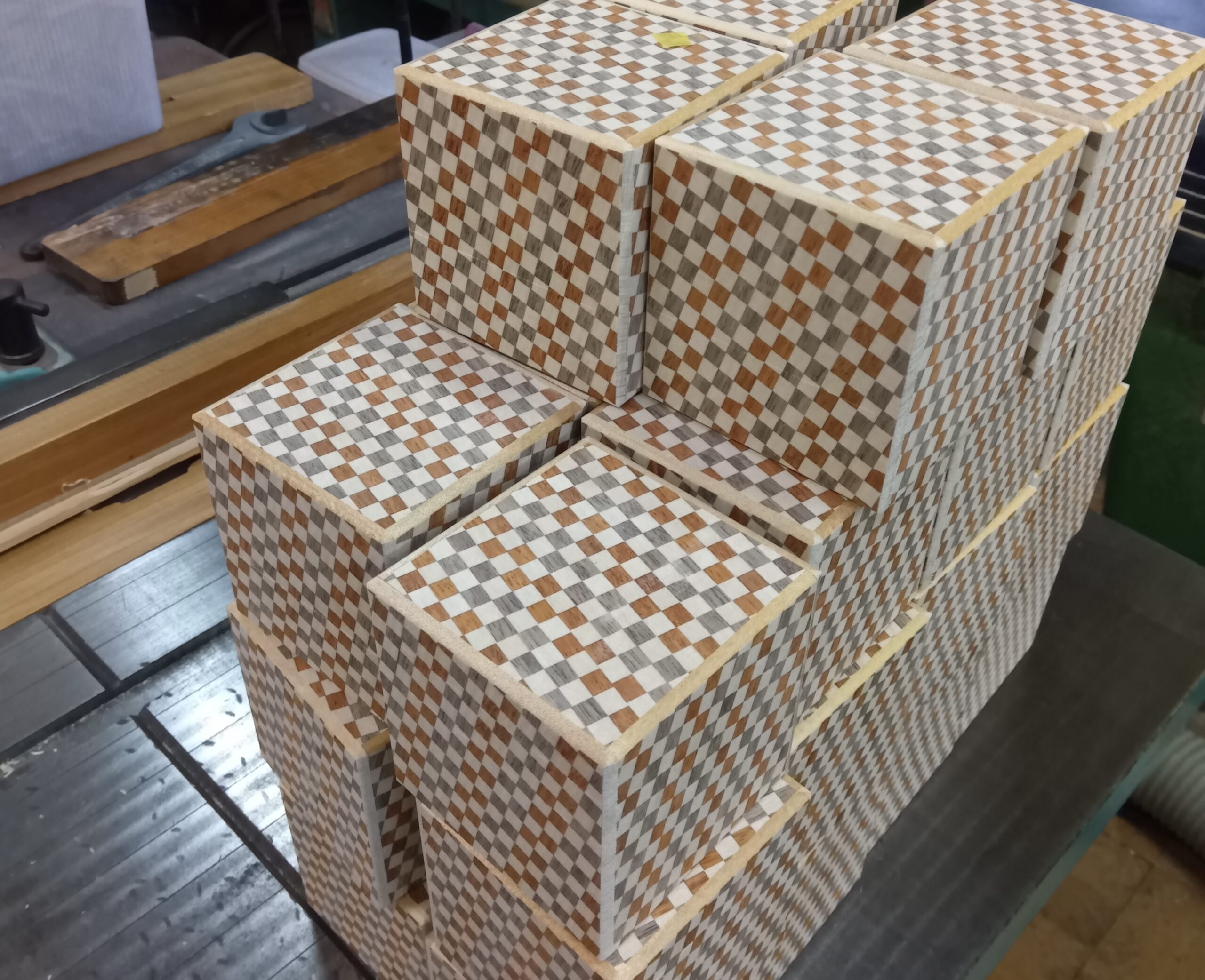Japan is back to regular weekdays starting today. I also went to my workshop as usual and continued my work. As planned, I spent the day finishing the 3-sun cube boxes with the 14-step mechanism. With this, I’ll move on to the undercoating process next.
All the boxes in this batch have the same checkered yosegi design, so just like with other Japanese puzzle boxes, I round off the corners. After that, I repair any small defects in the yosegi pattern. This time, the checkered pattern turned out really well, but during the slicing process, small chips can still appear in the design. Among the three colors used, the reddish Rengas wood is especially hard and has irregular grain, so it doesn’t slice easily. Generally, harder woods or those with coarse grain are more difficult to slice cleanly. About 90% of the small repairs this time were on the Rengas sections. The repair process is done by cutting a small piece from a spare Rengas sheet to match the size of the missing area, gluing it in place, and then sanding it smooth to blend it in. That’s why it’s essential to keep some extra pieces from the sliced yosegi blocks for future repairs. Most of the damaged spots are about 2 to 4 millimeters in size. Filling those tiny gaps can be tough—especially if your eyesight isn’t as sharp as it used to be 🤣
This kind of yosegi repair is a common task in workshops that make boxes and other yosegi crafts. It shows just how challenging it is to slice yosegi sheets perfectly without any tiny holes or chips.
I also started making the Aruki moving panels for the 3-sun cube boxes with the 18-step mechanism, which I’m currently working on next. I had other errands to take care of today, so I was only able to finish part of the panels. I plan to continue the work tomorrow. For this 18-step version, half of the boxes will have the same checkered yosegi pattern as the 14-step ones, while the other half will feature a natural wood design. As I mentioned before, the side panels will use the two-tone style, but for the top and bottom panels, I decided to use Kusunoki (camphor wood), which I had planned to use before but didn’t. I’m thinking of sandwiching the camphor wood between two other colors of wood. Instead of making simple stripes, I’ve cut them into finer pieces to create a more intricate design. It’s a bit difficult to explain in words, so once it starts taking shape, I’ll share it here. If everything goes well with the panel making, I’m planning to make this solid wood version the limited edition box for November (If it goes well…😅).
It was a very cold morning today. It’s not quite full winter yet, but the temperature dropped to about 7°C this morning — a single-digit number! Since it had been warm until recently, it felt especially chilly. Well, it is November, so it can’t stay warm forever, right? The sudden drop in temperature means I’ll have to be careful not to catch a cold. I think it’s finally the season for hot pot dishes again 😊


